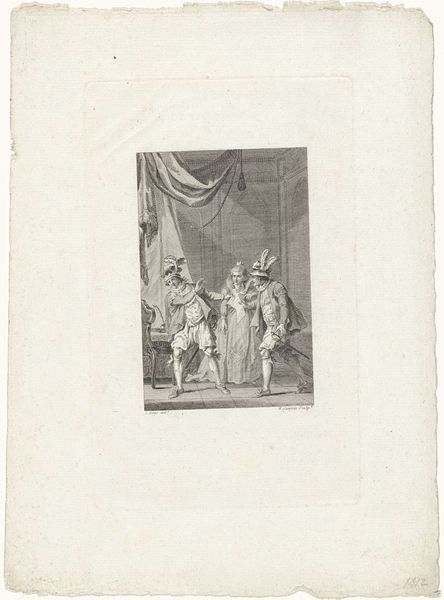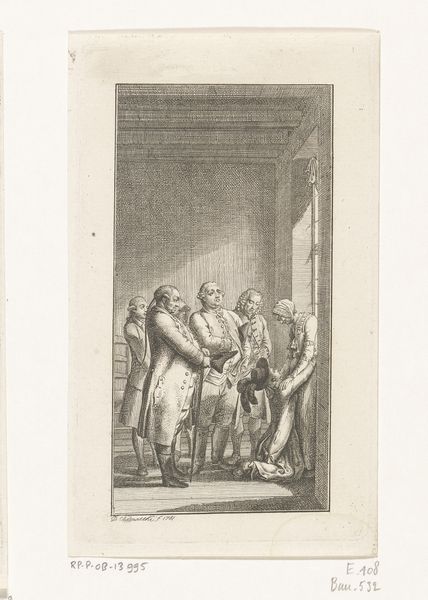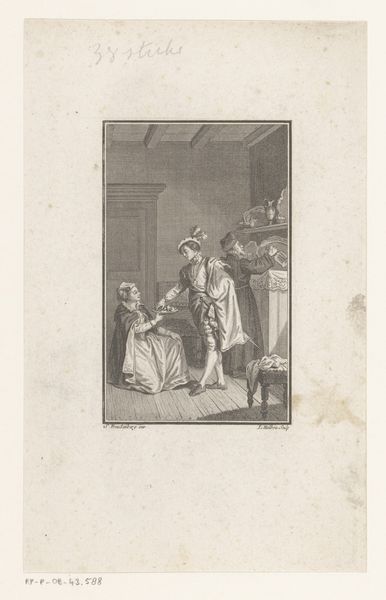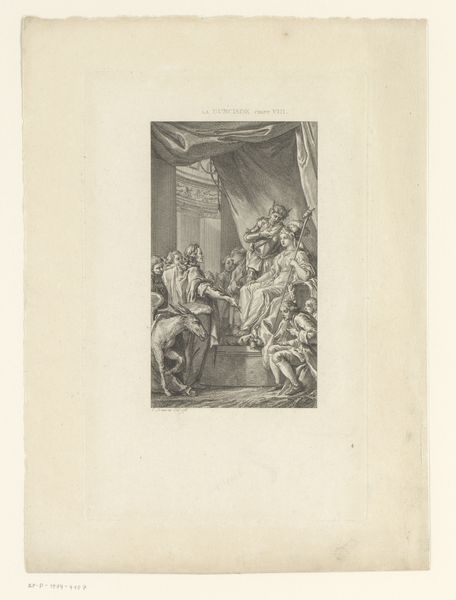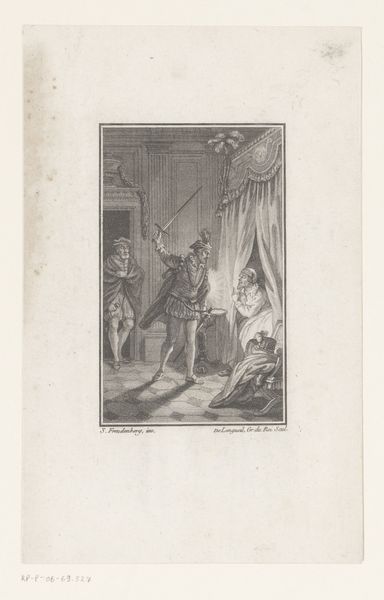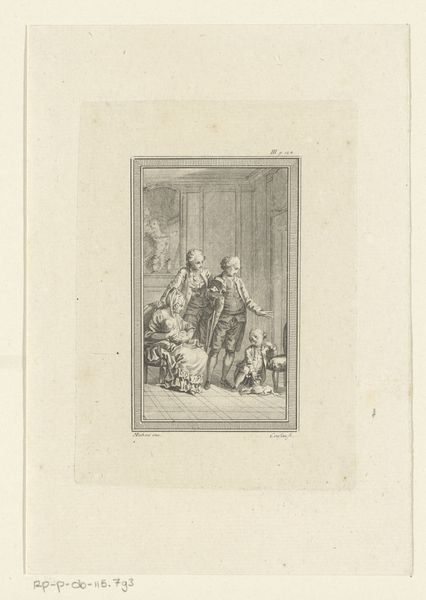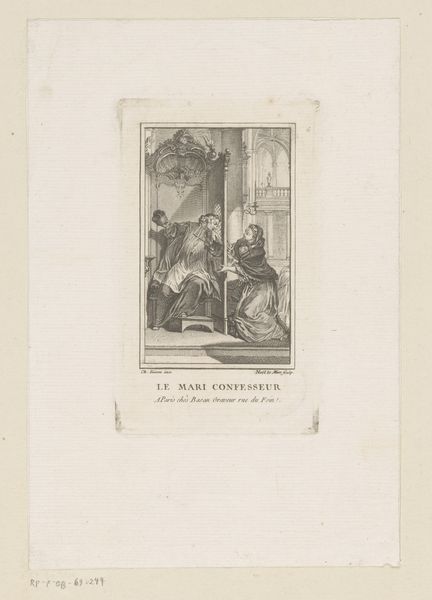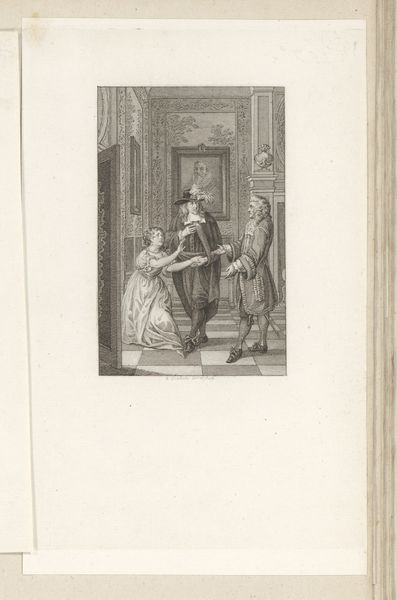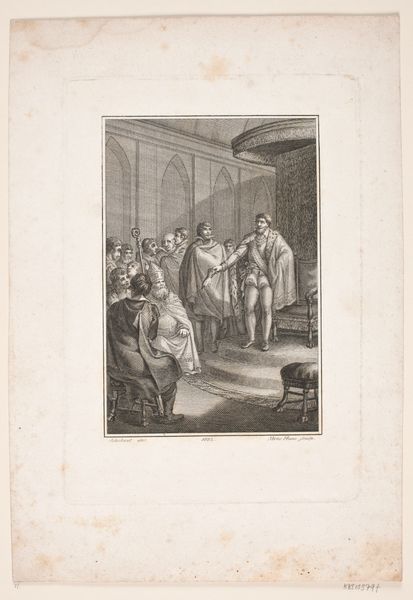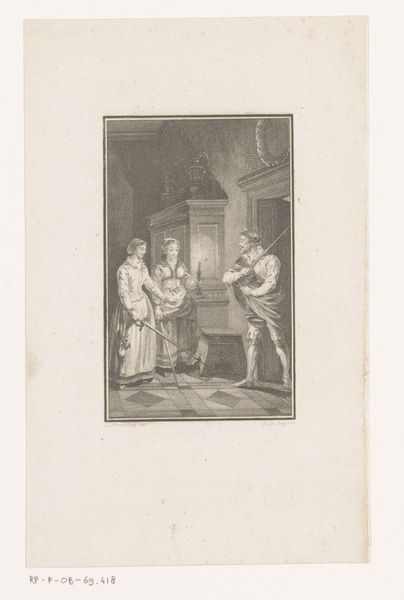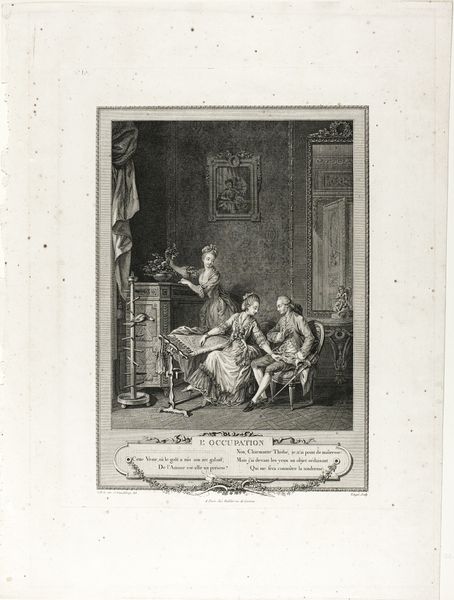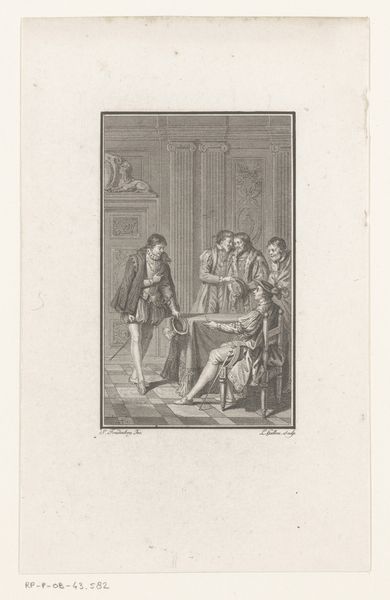
Le Calendrier des Vieillards, from "Contes et nouvelles en vers par Jean de La Fontaine. A Paris, de l'imprimerie de P. Didot, l'an III de la République, 1795" 1790 - 1800
0:00
0:00
drawing, print, etching, paper, engraving
#
drawing
#
narrative-art
# print
#
etching
#
figuration
#
paper
#
romanticism
#
genre-painting
#
history-painting
#
engraving
Dimensions: Sheet: 13 7/8 x 10 3/8 in. (35.2 x 26.4 cm) Plate: 12 1/2 × 9 3/4 in. (31.8 × 24.7 cm)
Copyright: Public Domain
Editor: This etching, "Le Calendrier des Vieillards," by Jean Dambrun, dates from the late 1790s. The figures, seemingly caught mid-narrative, create a rather intimate feel, wouldn't you say? What stands out to you when considering the composition? Curator: Indeed. Note how the artist orchestrates the distribution of light. The brightest areas highlight the faces and hands of the figures, guiding our gaze and underscoring their interaction. How do you perceive the interplay between the figures and their ornate environment? Editor: The patterned wallpaper and decorative objects feel almost like a stage set. I see a kind of constructed reality; a designed space to enhance the narrative. Curator: Precisely. Consider the contrast between the textures. The smooth skin, the delicate fabric, and the dense pattern of the wall covering. How do these varied textures contribute to the work's overall visual richness? Editor: I hadn't considered that, actually. Now I see how the artist uses these textures to draw the viewer in and focus on specific parts, which tells us how each detail has significance in the total composition. Curator: A sharp eye. Observe how Dambrun employs hatching and cross-hatching to define form and create tonal gradations. The density and direction of these lines dictate the areas of light and shadow. Editor: That's clever; this effect emphasizes volume. It feels almost photographic. This adds so much nuance. So, understanding those technical aspects gives greater appreciation. Curator: It reframes your viewing, doesn’t it? By examining the intrinsic components, such as the deployment of light, shadow, texture, and line, we discern the artist's method and uncover new depths of interpretation. Editor: Thank you! It makes me look at all art in an entirely different way, and appreciate all the creative choices. Curator: You are most welcome. Remember to appreciate art’s material presence beyond subjective interpretations.
Comments
No comments
Be the first to comment and join the conversation on the ultimate creative platform.
